Tips and Tricks To Reduce Noise in Your Restaurant and Keep Your Customers Coming Back
If you’re googling “How to Soundproof my Restaurant” and you DON’T have a restaurant next to an airport or concert hall—you’re in the right place.
Soundproofing generally refers to keeping sound either OUT or keeping sound IN your space. It costs a lot of money and usually entails deconstructing and reconstructing new walls. It will always involve a carpenter or contractor and a few days, if not weeks, of being closed.
But let’s get real, most commonly, restaurants suffer from reverberating noise from customers, music, and the kitchen happening inside the restaurant, which can slowly eat away at your customer’s enjoyment.
Here’s the good news: sound reduction is remarkably cheaper than soundproofing—but it can be tricky.
Why is my restaurant so noisy, and how can I reduce the noise in my dining area?
First, we need to discuss your restaurant, size, shape, and the materials the walls are made of and covered with.
Ask yourself these questions:
• Is my dining area a shape that resembles a square or a rectangle?
• Are my walls bare, and are they also concrete or something very dense like glass?
• Are my floors also bare and made of something dense and reflective, like hardwood or concrete?
• Is the room an open concept? Is it primarily tables in a central room rather than booths or separated sections?
The more times you answered “yes” to the above questions, the more likely you are dealing with a noisy restaurant and struggling to keep the sound down for your guests.
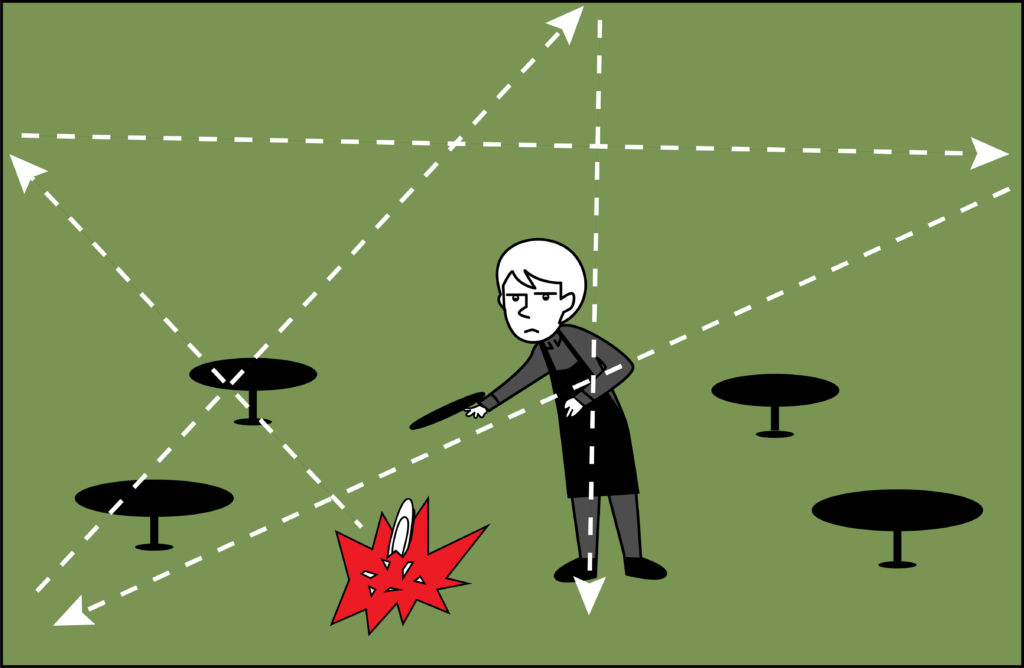
Sound bounces off the walls, and why that’s bad.
You may have seen illustrations like this showing the sound bouncing around a square room. Knowing how sound moves is important because for all the paths that a particular sound source has to get to your ear, the more reverberation you will have to hear.
Sound takes time to travel, and reverberation can commonly “build up” to a level louder than the direct sound.
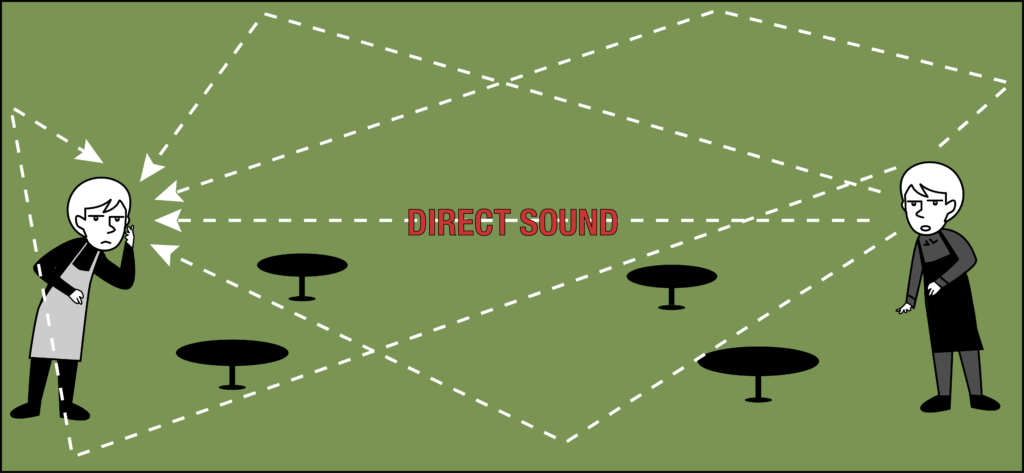
The “buildup” of reverberation is compounded by the multiple sources of sound in a typical restaurant or bar.
Every patron that is willing to open their mouth and say something is creating these reverberations. This blankets your space in over 85% reverberation, taking the volume of each individual voice and multiplying it by a factor of 4 to 5 times louder than it was initially.
Why a few sound panels against your wall aren’t working (And what else not to do).
Plenty of acoustic wall panels on the market are single-sided and easily hangable on a wall. They tend to look like this:
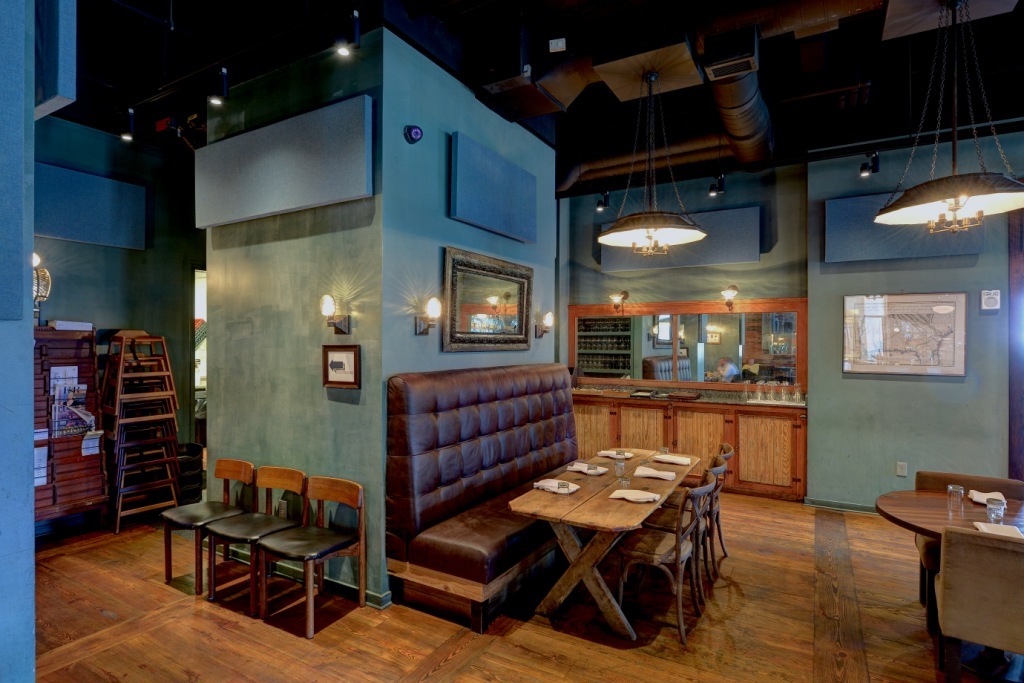
The problem is that you only address the sound once it reaches that particular spot on the wall and nowhere else. Every inch that your walls or ceiling don’t have these panels will reverberate just the same as a wall with no panels. It will make a difference to hang acoustic panels all over your wall. Still, the overall result won’t likely be enough to really impress you and, in my experience—be significant enough to notice.
Do yourself a favor and google “Hanging Sound Baffles” and click on the images tab. This is a great place to start educating yourself on what can make a difference in a room with a tall ceiling.
Hanging acoustic panels (hung perpendicular and not parallel to the ceiling) is a much better solution because it does a better job of ‘trapping’ the sound in between two absorptive materials. This can cut down reverberation by as much as 50 – 75%.




There are prefabricated sets that you can buy, but it will be up to you to find some that fit your aesthetic. Also, the more, the better. So, cheap, absorptive & “not ugly” should be your only priority.
You want most of the ceiling to be addressed, and you want it to be fairly “deep.” A good rule of thumb would be that if your ceiling is 10 feet tall, you should dedicate a full foot to the acoustics (10%).
What if my ceilings aren’t tall enough for baffling?
This is commonly the case, but you still have a few options to consider. If you’ve been struggling with this for a while, you’ve likely heard about coating the underside of every chair and table with sound-absorptive material. Maybe you even tried it and were underwhelmed with the results.
I use Rockwool or Roxul for most of my projects, and it can work very well. It’s gross and itchy and a pain to work with, but once you’re done, you’ll usually be happy. It has to be encased behind some fabric or something, so the dust doesn’t get everywhere.
A far less frustrating and dirty option is floor-to-ceiling curtains. Many places make curtains out of some seriously sound-absorptive material, and can do wonders.
Quiet Curtains is a company that focuses on these, and they are impressive (and expensive). You won’t necessarily have to sacrifice an open concept if you focus on trapping the sound rather than walling things off.
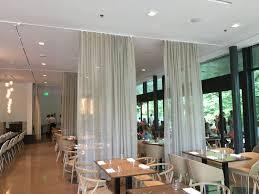
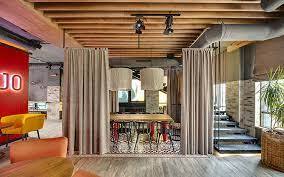
Curtains could also address an issue I only hinted at earlier in the article: the shape of your room.
The more square and cube-like your room is, the worse it will be for sound. When picking out where to put your curtains, you could play with asymmetry to further reduce reverberation. You want to have the least amount of hard surfaces facing each other as you can manage.
If you have two concrete walls on either side of your restaurant – consider dividing it up with a series of curtains that aren’t exactly parallel with either wall. This will catch as many of the sounds as possible and reduce overall reverberation.
If you’re still stuck, there are a few companies that can help you dial in exactly where you need to address your sound issues, one that I like is SoundProofCow.com, and if you use this link, you can give them the specifics of your space for some advice tailored to your situation.
As someone with bad hearing and a loud voice, I’m both part of the problem and in dire need of a solution. Trust me, I don’t want my voice bouncing off the walls of your restaurant.
